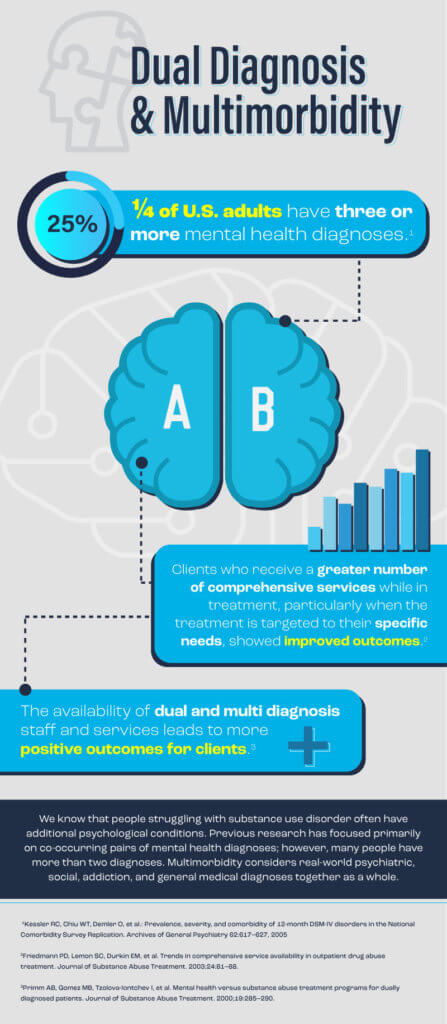Addiction is a difficult battle regardless of what the addiction is, but having co-occurring disorders can make that fight even more difficult. This is the premise, the purpose, and the importance of dual diagnosis treatment. So what is dual diagnosis treatment, and how does it work? These are a few of the questions a quality mental health drug addiction treatment center can help answer.
What is Dual Diagnosis Treatment?
According to the addiction recovery community and organizations like NAMI (National Alliance on Mental Illness), dual diagnosis is the term used to describe to co-existing conditions. The term is used when both a mental disorder or condition is present, along with the disease of addiction.
What research and studies have revealed is that more people deal with this diagnosis than any of us ever knew. Millions of Americans, in fact, are diagnosed with this co-occurring condition. In addition to this diagnosis illuminating more concerns, it is also common for both disorders to feed off each other.
The question, what is dual diagnosis treatment also leads us to the question, how does it work? Another feature that can commonly be found at quality recovery centers is access to a good dual diagnosis treatment program.
How Does Dual Diagnosis Treatment Work?
In some cases, the disorder can be the result of the addiction and in other cases, the addiction can be the result of a disorder. Alcoholism and depression is a classic example to answer the question what is dual diagnosis treatment?
Addiction to drugs like alcohol can often develop as a result of using alcohol as a coping mechanism to deal with depression. In other scenarios, depression is a disorder that can develop as a result of alcohol abuse. From here, it is easy to see how this becomes a vicious cycle, a treadmill that just won’t stop!
Fortunately, dual diagnosis programs are designed to address the addiction and any underlying causes or co-existing conditions. In particular, those that fuel one another.
The Benefits of Dual Diagnosis
Recovery works, it always has. The problem, however, has often been one of the co-occurring disorders. Using our alcohol and depression example, we can easily see the problem. While recovery may help the alcoholic stop drinking if that person is still suffering from depression, how long will it be before they self-medicate? It’s a vicious cycle.
It doesn’t matter either, which came first, the addiction or the disorder, both must be addressed for healing to begin. If the alcoholic sought professional help for their depression, how futile will those efforts be if the drinking continues to drive the depression? The treadmill simply doesn’t stop.
This is the greatest benefit of dual diagnosis programs and addiction treatment services that offer dual diagnosis treatment. It addresses the addiction and the disorder, it ends the cycle, and it stops the treadmill so we can get off. Then we can get on with the business of real recovery and real healing.

Originally Posted: https://www.crestviewrecovery.com/about-crestview-recovery-center/dual-diagnosis-treatment-center-in-oregon/mental-health-disorder/
Get Answers and Help for Dual Diagnosis
What is dual diagnosis treatment? It is the help many people need to find healing that is whole and recovery that lasts. Are you or someone you care about battling an addiction? Has recovery seemed impossible or elusive? Have you felt hopeless?
If this sounds like you or someone you know, there are answers and more importantly, there is real hope and real help. If you are ready to end the cycle of addiction and get off the treadmill of failed recoveries, then dual diagnosis treatment at a women’s rehab program could help. The first step toward getting the answers you seek, the hope you need, and the help you deserve could begin with a dual diagnosis program.


